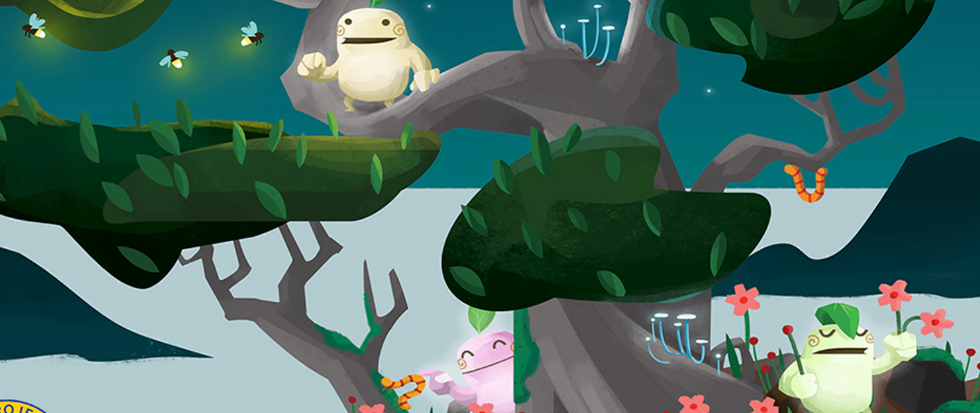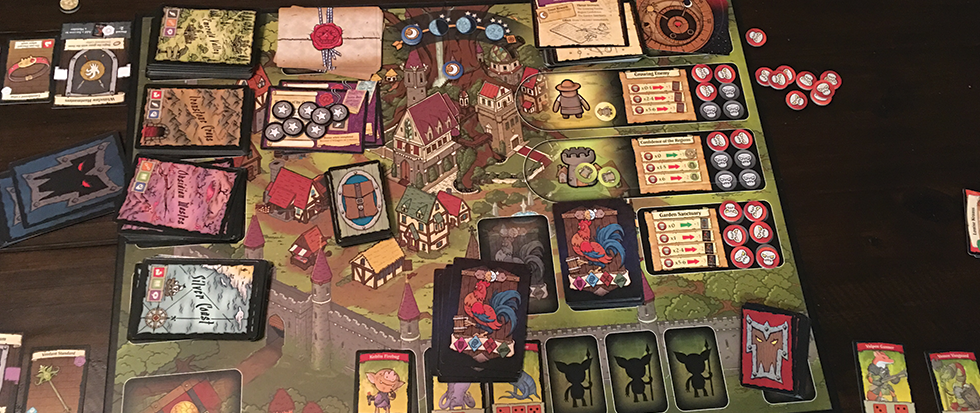
Kodama: The Tree Spirits Puts Nature Before Rules
Kodama: The Tree Spirits is a game about growing trees. In nature, trees to not follow a blueprint or a predetermined path; they grow how they please, their branches forming a unique natural fingerprint. Like snowflakes or people, no two are exactly alike, which makes building a board game about growing trees tricky. Games have structure and rules, a literal book that tells you how to play. Nature and games are seemingly at odds, but Kodama manages to pull off a well-balanced game about growing trees while capturing the free-form, aimless beauty of nature.
In Kodama, players aim to please the titular spirits by growing a tree for them. Each player begins with a trunk card and must branch out from there, adding new cards rife with mushrooms, fireflies, caterpillars and more. Each feature on a card scores points, and extra points for the same feature appearing on other cards in an unbroken chain down to the trunk. Cards are chosen from a face up display that all players can see, and because everyone’s tree is public knowledge, there is a bit of strategy in choosing which branch to take. You never feel like you’re without any good options, though, thanks to an impressive balance of features and cards.
At the start of the game, each player is dealt a hand of four secret Kodama cards. These are conditions that, when met, offer up significant points during scoring rounds. For example, a card might award points for having lots of clouds and fireflies, or having multiple branch paths. I learned in my first game that it’s important to play toward your Kodama cards as they can make the difference at the end of the game; most games I played were decided by only a handful of points.
What makes Kodama special is that everyone ends up with a different tree. Looking around the table at the end of the game reveals that, like nature, there is no correct way to grow a tree. The card placement mechanics in Kodama allow for impressive flexibility in your tree: as long as you can connect branches in a way that makes sense to the eye, there are no illegal moves. The rules could have been rigid about where cards are allowed to be played, but that rigidity does not exactly gel with the erratic patterns found in nature. Instead, the trees grow in natural branching paths in a way that is almost soothing.
Another reason to love Kodama is the art. It is truly a beautiful game, and it’s an absolute joy to watch everyone’s trees grow and spread out over the table. The Kodama themselves are reminiscent of the tree spirits from Princess Mononoke, and add an adorable touch to the game. All the caterpillars and mushrooms and fireflies create a little ecosystem that is fun to examine. These aesthetics all combine to make Kodama one of prettiest games I’ve played recently, By Order of the Queen notwithstanding. That the game is easy to learn and teach is an added bonus.
Kodama: The Tree Spirits fits nicely into any collection that’s lacking in small, easy to teach games. I plan on breaking it out during small gatherings after putting on a pot of coffee for a relaxing evening of conversation and causal gardening.





